James Gurney Art Demo: Secrets of Imaginative Painting
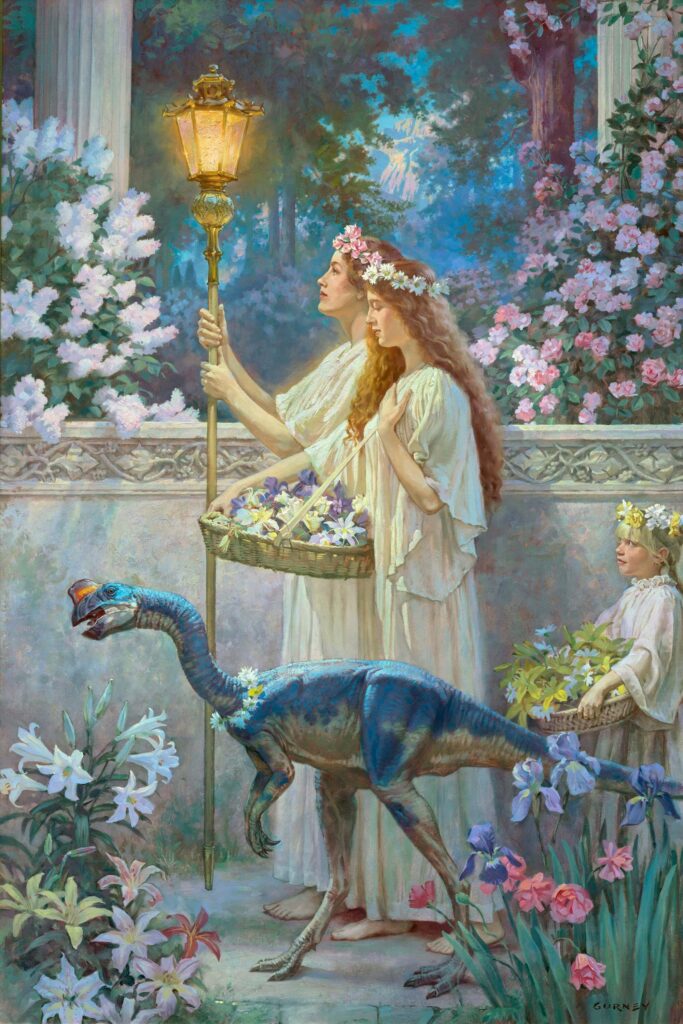
How do you turn an imaginary subject into a realistic picture? James Gurney—artist, illustrator, and author of the four-novel series Dinotopia—shares his secrets in this step-by-step art demo.
by James Gurney
Step-by-Step Art Demo: Garden of Hope
In the 1990s and 2000s, I wrote and illustrated the four-novel series Dinotopia, in which humans and sapient dinosaurs enjoy a peaceful, shared society. The illustration Garden of Hope (below) appears in the second book in the series, Dinotopia: The World Beneath.

I’ll take you through the step-by-step creative process behind this painting. Artists have used this creative process for centuries to bring their imaginations to life.
Read more in Artists Magazine: Activate Your Imagination: A Guide to Painting Magical Realism
1. Abstract studies
The process for creating Garden of Hope began with an elusive feeling. I imagined myself witnessing a festival or a procession taking place in a flower garden at twilight, with humans and dinosaurs interacting in a mysterious way. I experimented with two abstract studies in oil.


With these painterly pieces, I considered the emotional effect of the colors and the light. I tried the idea in a horizontal format for an epic, wide-screen feeling.
2. First thumbnails
I decided to zoom in on a single female figure and her saurian companion passing through a garden of flowers.

3. More thumbnails
At this stage, I began thinking about calling the painting Garden of Hope, which suggested to me a little more specific feeling about the scene. I imagined the young woman straying from a harvest procession or wandering through a garden.

4. Girl with dinosaurs
Still sketching purely from my imagination, without models, I visualized a young girl in a long dress carrying a basket of flowers and accompanied by three small dinosaurs.

5. Color study
I created a color sketch to work out the lighting and time of day. I tried suggesting two women walking side by side, one with a lamp and the other with a basket of flowers.

The idea occurred to me to include a hint of an architectural setting, with the figures walking next to a low, decorative wall. The figures were still invented from my imagination.
Related: Creating Imaginary Worlds in Watercolor
6. Comprehensive
Still painting entirely from my imagination, I explored the idea of having a couple of children following the two women. I wanted the children to suggest the feeling that they admire the older girls and aspire to be like them. This helps express the idea of hope.

7. Photo reference of models
Once I knew what the figures were doing and how they fit into the composition, I enlisted models to pose for the women and the girl. I had them dress in costumes—some that I already owned and others that I borrowed. I used a clamp-on lamp for the lantern and filled the basket with cheap silk flowers.
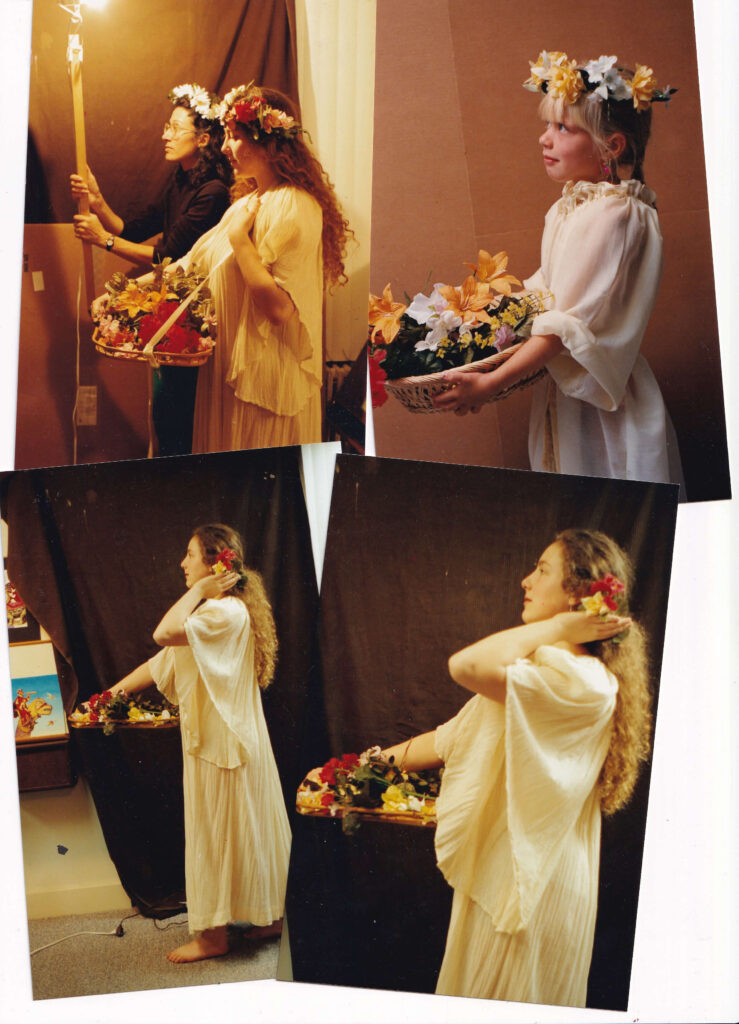
8. Charcoal layout
After posing models, I interpreted the scene in charcoal to establish the tonal relationships. The image of the faces is a detail of a half-size drawing.
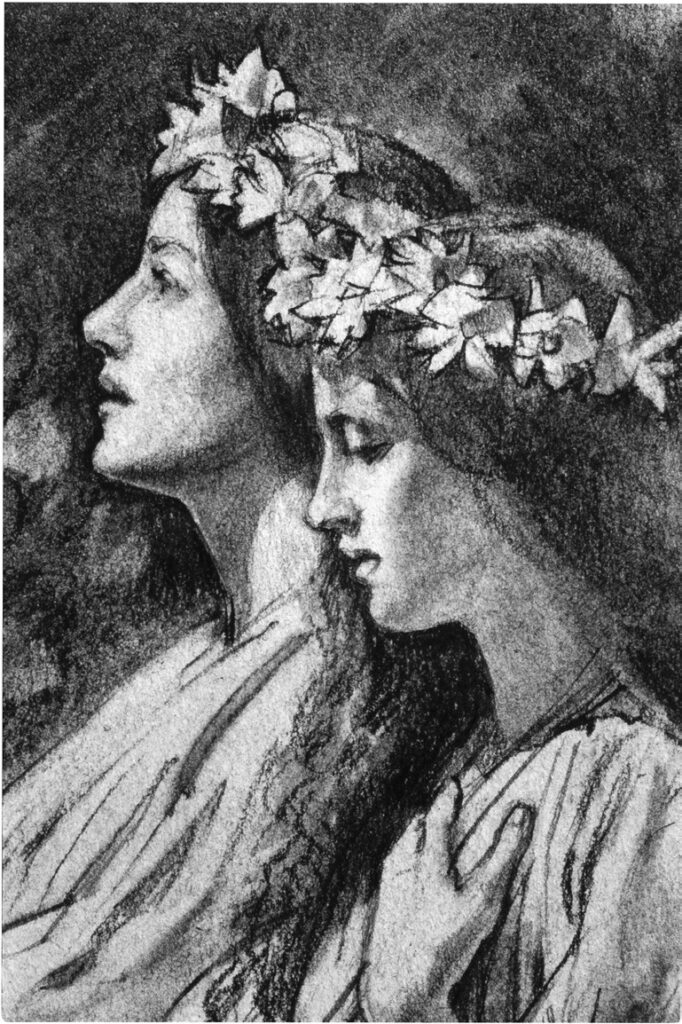
I make charcoal comprehensives like this one to figure out the basic arrangement of light and dark tones and the way the figures should overlap. Erasing and changing things is easy in charcoal, so I feel free to add or subtract elements until I’m sure I have the composition I want.
9. Rough color sketch
There was one more important step. Part of the planning process for each of my major paintings is a color study painted over a photocopy of the charcoal comprehensive. I painted this one quickly with a bristle brush. It served as the guide for the colors used in the final painting.
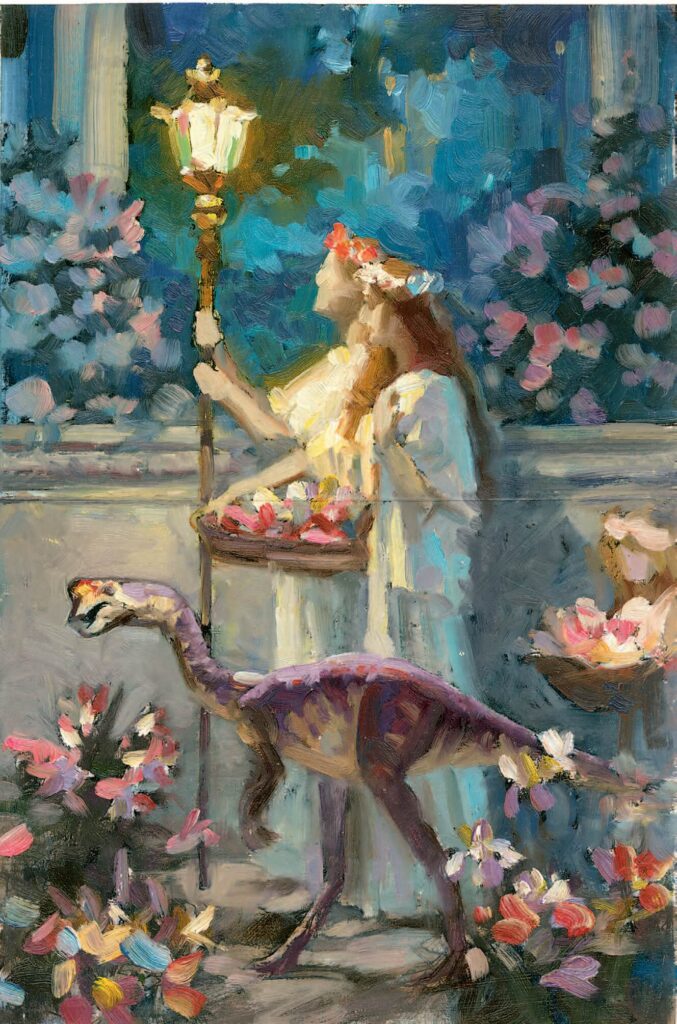
10. Garden of Hope

With all these studies behind me, I felt a lot more sure of myself when it came to painting the final image. With any painting, there are always so many issues to figure out. I find it helps to solve them systematically, in advance, leaving me much freer to experiment and play with the final execution.
See Another Art Demo by James Gurney
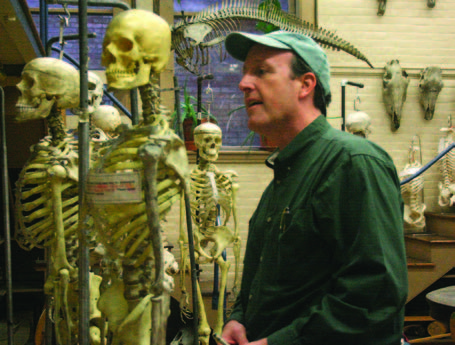
Check out the new issue of Artists Magazine for more on James Gurney’s creative process and a step-by-step demo of a spine-tingling image.
About James Gurney
James Gurney is the artist and author best known for his illustrated book series Dinotopia. He specializes in painting realistic images of scenes that can’t be photographed, from dinosaurs to ancient civilizations.
James Gurney wrote the book Imaginative Realism, which teaches how to paint realistic pictures of imaginary subjects. He also created a video tutorial called Fantasy in the Wild, in which he paints fantasy scenes on location, and has hundreds of free videos on his YouTube channel.
He is also a dedicated outdoor sketcher, sharing his adventures and insights as he paints with gouache, watercolor, casein, and oils. Learn more and explore his books, videos, and art at jamesgurney.com.
More Art Demos
Creating Oil Pastel Scenes from Imagination: A Demo
Painting the Ocean with Light and Color: A Demo
Take a Step Back and Let Your Subconscious Do the Drawing
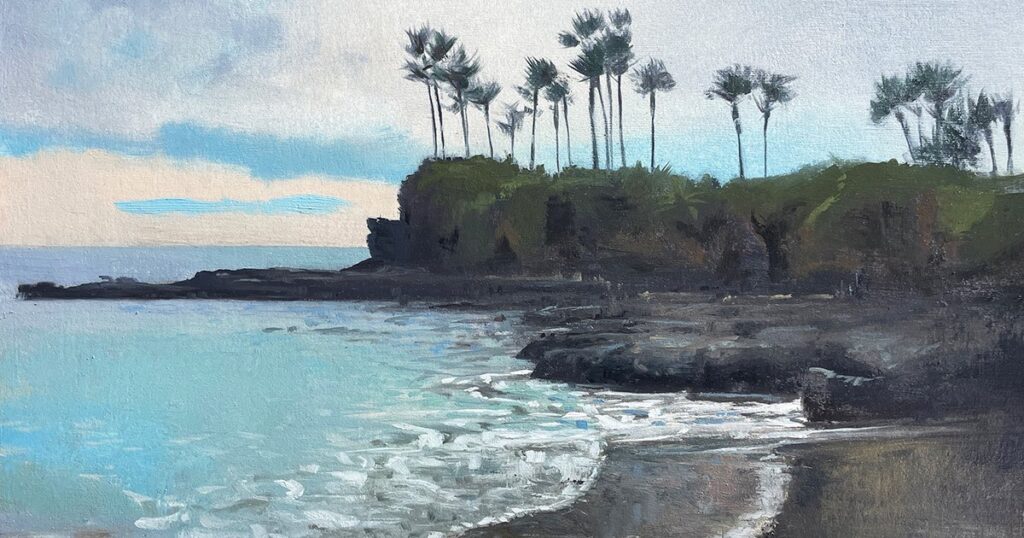




Have a technical question?
Contact UsJoin the Conversation!